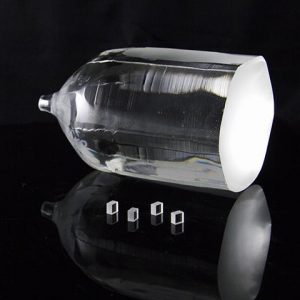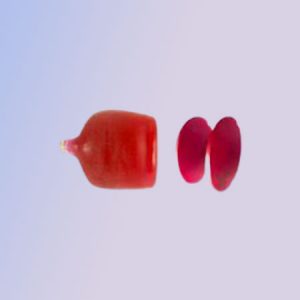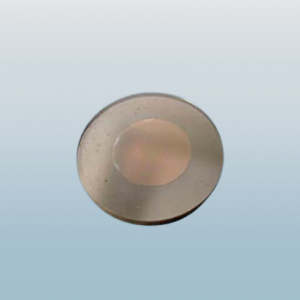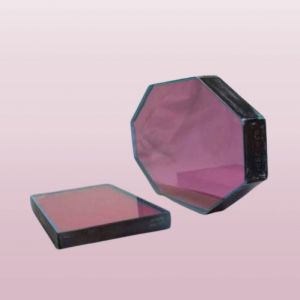- Solid State Laser
- Semiconductor Laser
- DPSS laser
- Gas Laser
- Fiber Laser
- Fiber Coupled Laser(MM)
- Fiber Coupled Laser(SM)
- Ultrafast laser
- Femtosecond Laser
- Picosecond Laser
- Pulsed Laser
- Q-switched Laser
- Raman Laser
- Narrow Linewidth Fiber Laser
- Wavelength Tunable Laser
- Laser Diode
- Laser Module
- Pigtailed Laser
- DFB Laser
- DBR Laser
- SLED Laser
- VCSEL Laser
Cr:GSGG- Laser Crystal – Passively Q-switched Crystal – Customized Products
Product ID: 6644
$100
Cr:GSGG- Laser Crystal – Passively Q-switched Crystal – Customized Products
Cr:GSGG crystal (Cr doped Gadolinium scandium gallium garnet) is a highly efficient laser material. An electro-optic shutter element was first utilized to provide the Q-switched operation of the ruby laser. Passive Q-switched ruby lasers were achieved with saturable dye absorbers and colored glass (compounds of selenium and cadmium sulfide).
Recently, the operational characteristics of a dye Q-switch for a pulsed ruby laser were still being studied for application in underwater holography. However, the dye Q-switch was limited in durability because of the degradation (decomposition) of the dyes, and the glass Q-switch was readily damaged. Thus, the tetravalent chromium-doped gadolinium scandium gallium garnet Gd3Sc2Ga3O12 (Cr4+: GSGG) passive Q-switch ruby laser offers first-time high reliability, durability, and high efficiency.
Cr:GSGG Crystal – a Crystal Which Shows High Efficiency and High Reliability
Cr4+: GSGG has been utilized for the first time to provide a saturable absorber Q-switch for the ruby laser. Single output pulse operation (100 mJ and 27 ns duration) with efficiencies relative to the free-running ruby laser operation of 25-30% was routinely obtained.
The crystalline material GSGG: Cr3+ is currently of interest as a broad-band, room temperature laser material. The small separation between the 4T2 and 2E electronic levels of Cr3+ in the system can result in interesting spectroscopic behaviour.
People have investigated the temperature dependence of the CW and transient luminescence. They have found it to be consistent with a model for the dominant Cr3+ site in which the lowest energy 2E and 4T2 levels are approximately coincident in energy at low temperature.
Note:
$100 is a deposit, not the final price of the product. Please contact us for price if needed.
Features of Cr:GSGG Crystal:
High reliability
High efficiency
High durability
Strong and saturable absorption
Good thermal conductivity
Spectral Properties
| Emission wavelength (nm) | 1061.2 |
| Emission Cross Section (pm2)a | 13 |
| R2-> Y3 Transition Linewidth (cm-1) | 11.5 |
| Nd3+ Fluorescence Lifetime (ps) at Low Concentrations (<1017cm-3 ) | 273-283 |
| Nd3+ concentration for which lifetime is reduced by 50% (1020 Nd ions cm-3) | 5 |
Optical Properties
| Refractive index at 1064 nm | 1.9424 |
| Index change with temperature dn / dt, (10-6 k-1) | 10.9 |
| Index change with temperature | |
| P11 | -0.012 ± 0.003 |
| P12 | 0.019 ± 0.003 |
| P44 | -0.0665 ± 0.0013 |
Thermomechanical Properties
| Density (g*cm-3) | 6.495 |
| Calorific Capacity (J*g-1*K-1) | 0.4029 |
| Thermal Conductivity (W*m-1*K-1) | 6 |
| Thermal Expansivity (10-6 K-1) | 7.5 |
| Poisson Ratio | 0.28 |
| Young’s Modulus(GPa) | 210 |
| Breaking Tenacity(MPa) | 1.2 |
| Thermal Stress Resistance (W*m-1)b | 660 |
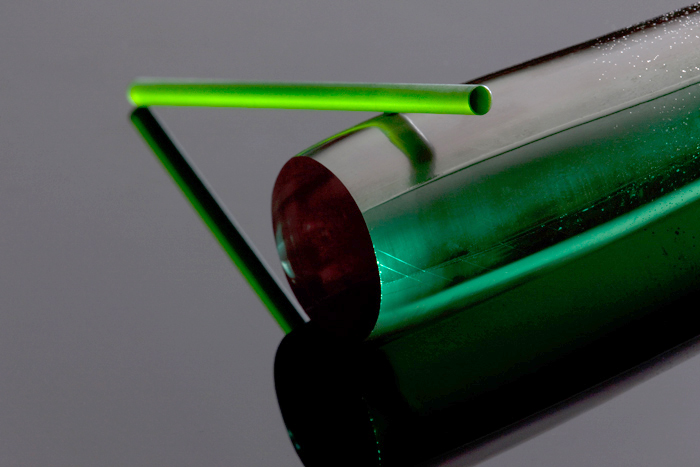
.jpg)
